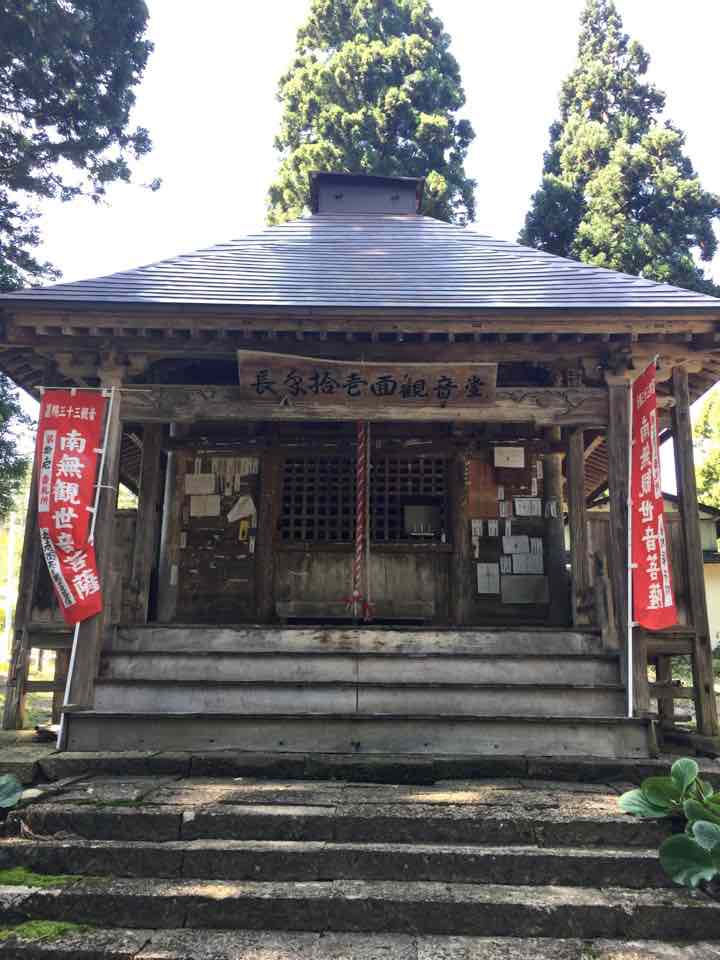Nagate-kan-non

Nagate-Juichimen-kan-non-do has
been said to be built by Jitsugi Sozu in 1215. At first, it was on the
top of Mt. Nagateyama and replaced here in 1712. This Kan-non-do was
rebuilt in the Bunsei era(1818-1830). It has the hipped roof which is
roofed with copper plates, Hirairi(Japanese traditional architecture
style), and unpainted natural Makabe-zukuri walls. It measures 3.6m
both in length and in width. Inside of the temple, Ema(wood plates on
which Japanese people write their wishes) is displayed and the framed
picture, a kind of the sign board, written as
“Nagate-Juichimen-kan-non-do” is hung over the pent roof.
In the precinct, there are the Yudonosan stela, the Iidesan
stela (in Okitama district a lot of people believed Mt.Iide as a sacred
mountain) and the Ohmiyama stela (in Okitama district, people was eager
to participate in the lecture of Buddhism called as Omiya-koh,
especially women did because of profit of safe delivery). We can
imagine how eager people had believed this shrine from these
stelas.
The sitting statue Juichimen-kan-non in major shrine is 70cm
tall. The festival takes place on July 10th every year, and on this day
this statue is shown to ordinary people. This statue has the profit for
disaster prevention, so nowadays people wish for road safety to
this.
The 11th Fudasho(temples where amulets are collected) in the sacred
area of Okitama 33 Kan-non-do.
The principal image: Juichimen-kan-non-Bosatsu
A 31-syllable Japanese poem people read to praise to Buddha
Chichi Haha no Megumi mo fukaki Nakate keru Hotoke no chikai Tanomu
narikeri
Denomination: Shingon sect Daigo-ha
Owner temple: Daigyoin Zuiunji temple
(Sub-owner temple: Kinoene-Daikokkuten-honzan-houjuji in Onogawa,
Yonezawa)


